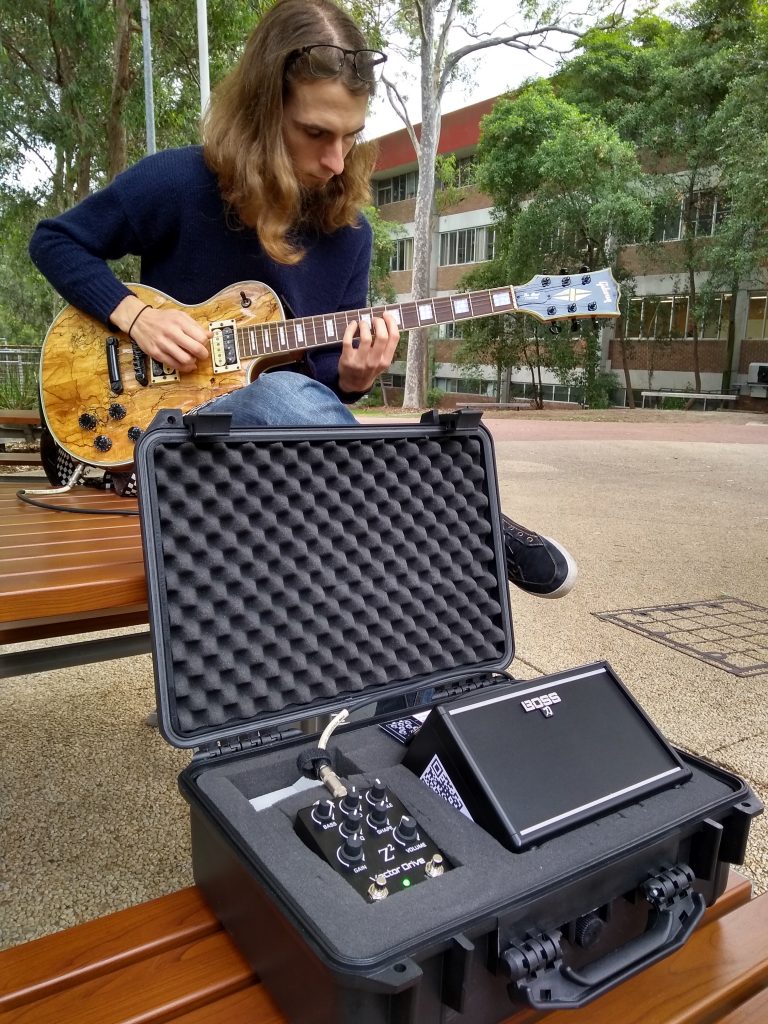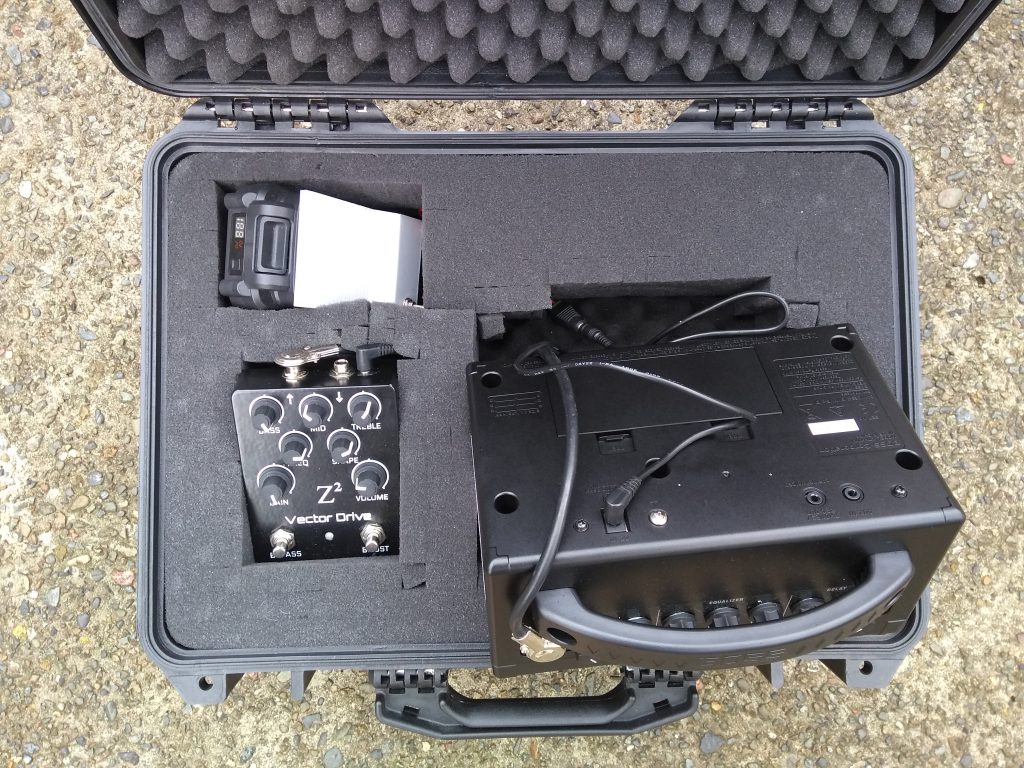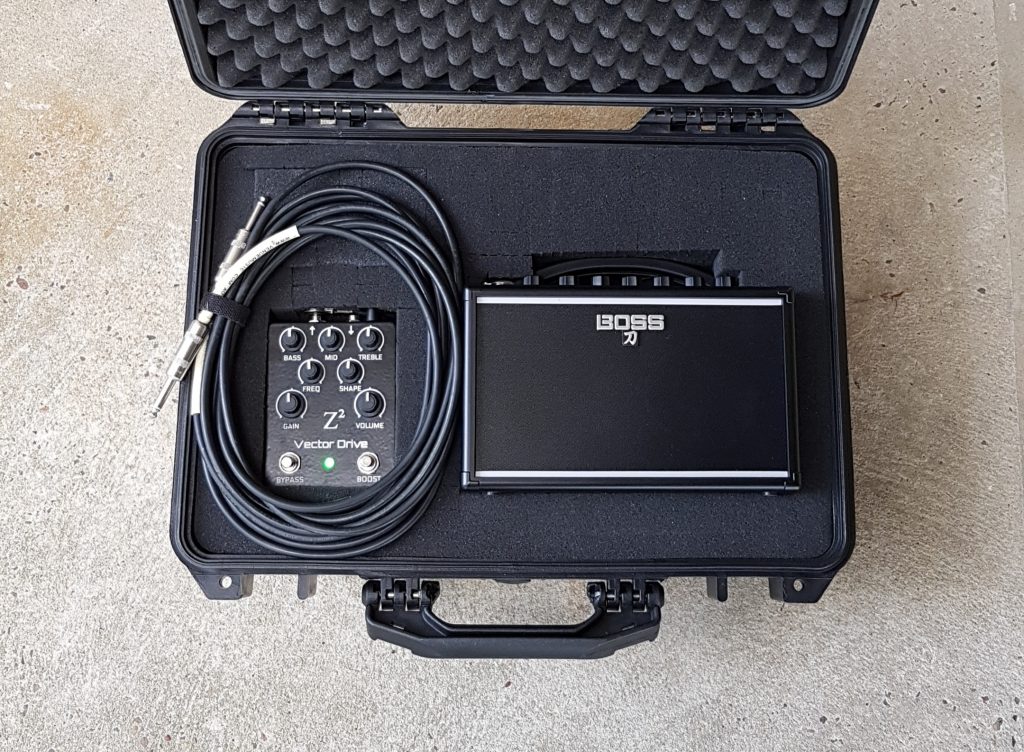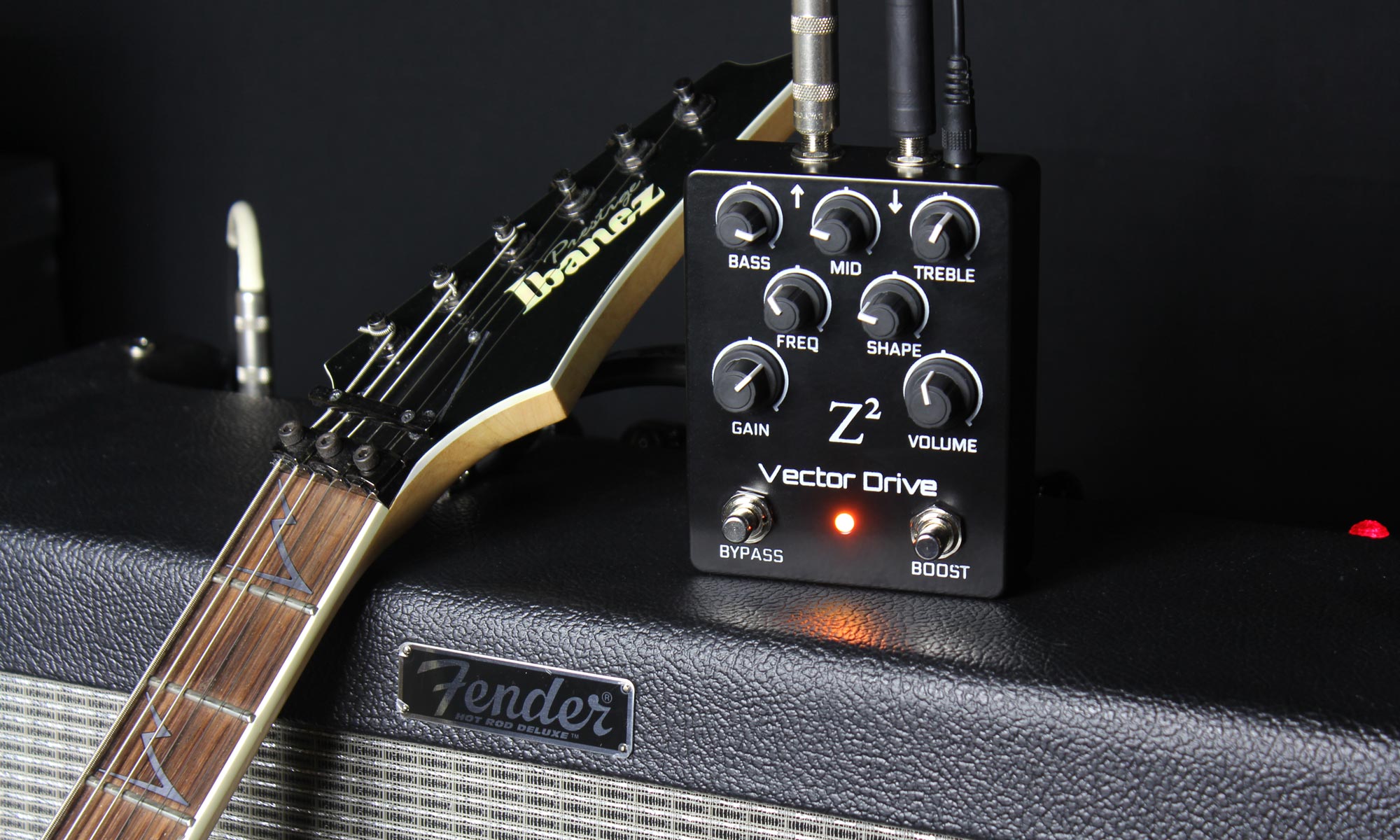Recently we posted about a portable Vector Drive demonstration setup. This article documents how it was built should you like to create something similar.
The requirements of this project were:
- Portable, battery powered, operation
- A reasonable price/size/tone quality compromise
- Quick setup

After a lengthy session of YouTube research and a browse around Musos Corner we settled on the surprisingly good Boss Katana Mini amplifier. It is battery powered by six AAs but also has an external power jack (the manual doesn’t say but its 9 V, 350 mA, 2.1 mm, centre negative).
The Vector Drive also requires 9 V so we decided to build a battery pack that’s big enough to power the pedal and amp. We did a test run with NiMh AAs and, although workable, was incredibly time consuming to manage. For a more convenient battery we opted to 3D print a mounting bracket for a “20 V” / 2Ah (5 cell 18650) cordless drill battery we had in the Z Squared workshop. In testing we found that it will run for close to 10 hours.

To power the 9 V amp and pedal from a high voltage battery we included room for a small buck converter module. The system draws, at most, around 600 mA so a small module sourced from eBay got the job done. NB: Many pedals (especially analogue ones) will output noise when powered by cheap switchmode converter modules. The Vector Drive (and Katana Mini) contains substantial power filtering and reconditioning circuitry to prevent power supply noise from corrupting the output audio.
To keep the setup safe in transit, and to provide a fast setup, everything was built into a case found at the local Bunnings. We buried the battery, power cables and patch lead under the included foam where possible; patch leads with right angle “pancake jacks” were especially helpful here.
To mount the Vector Drive at a good height we removed a hole in the provided foam then cut a section to provide some packing underneath it. It works for now but makes pressing the foot switches a little difficult. In time we’ll place something solid underneath it for easier operation.
Finally, we found room for a 5 m guitar lead coiled up inside the case. With the lid closed everything is reasonably well squashed together and doesn’t move around in transit.

